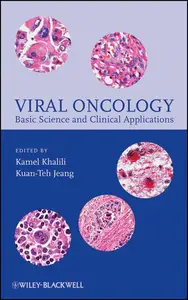
Free Download Viral Oncology: Basic Science and Clinical Applications By Kamel Khalili, Kuan-Teh Jeang
2009 | 491 Pages | ISBN: 047037991X | PDF | 4 MB
A comprehensive look at the latest research findings and clinical applications of oncogenic virusesWritten by a panel of academic experts, Viral Oncology is the first self-contained and comprehensive book to present both scientific and clinical information on viruses linked to some of the most important human cancers. Readers can turn to this book for the most in-depth and up-to-date coverage of: HPV-associated cancers; molecular events associated with HPV-induced human cancer; the role of the HPV E6 oncoprotein in malignant progression; virus association with brain tumors; involvement of the polyomavirus JCV in colorectal cancer; possibleassociation of BKV with prostate cancer; oncogenic transformation bypolyomavirus large T antigen; SV40 and human cancer; SV40 and mesothelioma; molecular immunology of hepatitis B-associated viral cancer; hepatitis B vaccine and hepatocellular carcinoma; pathogenesis of acute and chronic hepatitis Cvirus infection; molecular mechanisms of hepatitis C virus-induced cellulartransformation; clinical aspects of HTLV-1 associated cancer; oncogenic potential of the HTLV-1 tax protein; HIV-associated malignancy; HIV-related lymphoma; biology and epidemiology of HHV-8; the role of KSHV in pathogenesis of Kaposi'ssarcoma; molecular pathobiology of EBV infection; and EBV as a pathogen.Several chapters are devoted to the basic science of oncogenic viruses for thestudy of their pathogenesis, drug development, and employment of viral vectorsfor vaccine and gene therapy. The book also includes complementary clinically based chapters describing natural courses and treatments. Additionally, bonusclinical materials are embedded within chapters and an easy-to-use indexcompletes the book.Viral Oncology is an essential resource for clinical and research oncologists in medical facilities and biological research laboratories; clinicians and scientists working in related biomedical areas; medical students working toward a first or higher degree in the life sciences and other biomedical fields; and pharmaceutical scientists and developers.
